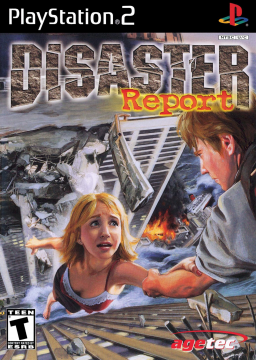There are a lot of things that make this game complicated to run. Some of those differences are choosing which version to run, and even if you're going to stick to one version, it helps to know the differences so you're kept in the loop.
Titles
The game has multiple names. In North America, the NTSC version was released, and the game is known as "Disaster Report". This is the most common version of the game, most copies of the game are NTSC.
In Japan, the NTSC-U version was released, and the game is known as "Zettai Zetsumei Toshi".
In Europe, the PAL version was released, and the game has en entirely different name of "SOS: The Final Escape" (What I have always known the game as). The PAL version also has a completely different box art, with a red background and different cover art.
Difficulties
In the North American and Japanese versions of the game, Normal and Hard are the available difficulties you are given. However, in the European version of the game, you have Easy, Normal and Hard difficulties available. The easy difficulty gives the player twice the QP of normal, so less menuing is involved. Easy is probably in this version because the European version was released a lot later than the others, so things unfinished upon initial release had time to be completed before it's European release.
Framerates and displays
The Japanese and North American versions of the game run at 60FPS, whereas the European version of the game runs at 50FPS. The European game running slower is probably because standard European TVs back in 2002/2003 supported a lower Hz display and were designed to display lower framerates. If you try to play a Japanese or North American PS2 game on a PAL TV, the image is usually still visible but in black and white. This is common for a lot of other games too, notably Nintendo 64 and GameCube. This isn't the same reverse however, as you can run PAL games on American and Japanese TVs with no problems.
So, which version is the fastest?
Ultimately, the Japanese (NTSC-J) is probably the best version to use at this point because for the unskippable cutscenes, they happen faster, because the Japanese text takes less time to go through. Behind that, the North American release (NTSC) is likely to be just as good as the Japanese version but very slightly slower. As for PAL, the framerate means that it is potentially quite a lot slower than the NTSC versions, however the Easy option being available means that management of thirst and health are a lot less of a worry, and there is less menuing as a result.





